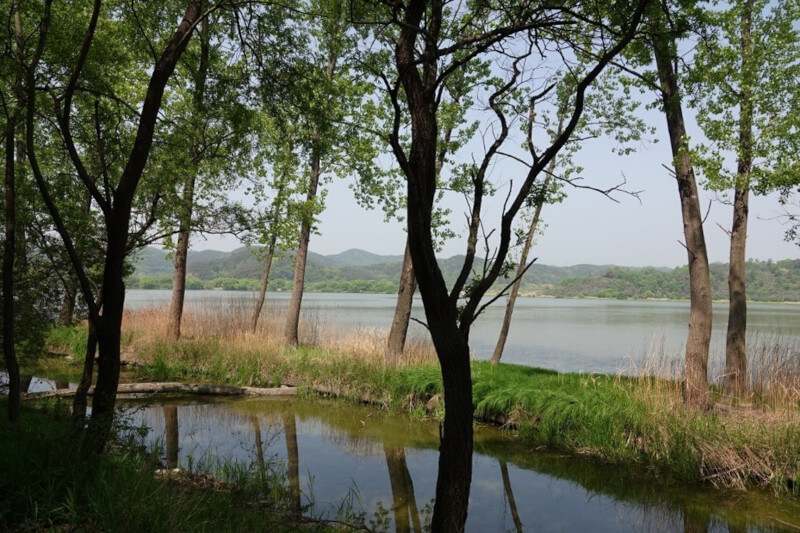
Upo Wetland © EAAFP Secretariat
The 1st Upo Wetland Harmony Symposium was successfully held in Changnyeong County, Ro Korea from 21st to 22nd April 2022. It was hosted by Changnyeong County, with the support from the EAAFP Secretariat with the National Institute of Ecology (NIE), Ramsar Regional Center- East Asia (RRC-EA), and Gyeongsangnamdo Ramsar Environmental Foundation (GREF). Local Project Coordinator of EAAFP Secretariat, Ms. Yeonah Ku and Programme Assistant Hyoeun Kim supported and participated in the event.
Upo Wetland Flyway Network Site (EAAF096), also a Ramsar Site, is located in Changnyeong County, Southern part of Ro Korea. The site consists of four natural riverine marshes of Nakdong River. As the site was well-preserved and with suitable habitats, the Ministry of Environment of Korea has reintroduced locally extinct Crested Ibis in the area (link).
In addition, Changnyeong County was inscribed as one of the first batches of Wetland Cities by the Ramsar Convention in 2018. For its following action as a Ramsar Wetland City, Changnyeong County held an international symposium, with the Slogan “Upo Wetland, where birds and people belong”. The county is planning to organize a world expo on wetlands in the long run.

Q&A session of the symposium © EAAFP Secretariat
The symposium consisted of keynote speeches ‘Upo Wetland and Sustainable Development’, and sessions titled ‘Benefits from Wetlands’, ‘Our Promise, Protection on Migratory Waterbirds and Crested Ibis of Upo, Flying Again’, and ‘Discussion’.
In the first session, “Benefits of Wetlands”, Dr. Mathew Simpson from ‘35 %’ introduced the Ramsar Convention and its criteria for Ramsar sites considering public awareness; Dr. Wooyeong Joo from NIE evaluated the ecosystem service of the Upo Wetland, based on the Ro Korean policy and the general concept of ecosystem services; and Mr. Seungoh Suh from RRC-EA promoted managing wetlands led by the local NGO.
In the second session, Mr. Simba Chan from the Japan Bird Research Association explained the extinction and conservation process of birds, with cases of Yellow-breasted bunting and the Chinese Crested Tern. Which showed the importance of building up strong networks both nationally and internationally. Then, Mr. Nelson Chen from Guandu National Park shared the case of citizen science, as experience in managing the citizen scientists and datasets was valuable for those who need more scientific evidence for conservation. Dr. Seong-Jin Kim shared the conservation status of the Asian Crested Ibis which had been extinct in Ro Korea and successfully reintroduced in Upo Wetland.
The second day of the symposium was an excursion to the Upo Wetland, including a visit to the Upo Crested Ibis Restoration Center, and Changnyeong Upo Wetland Eco Center. The Eco Center focuses on ecological elements and provides activities and materials for visitors’ experience, targeting children.
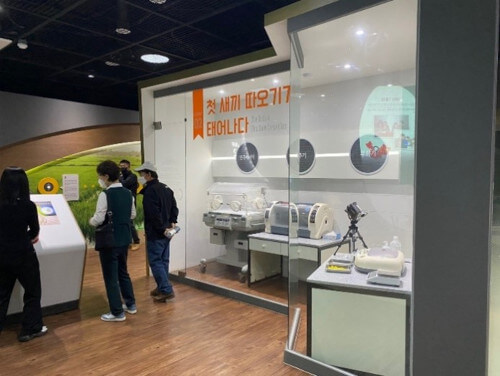
The machines for incubating Crested Ibis at the Upo Crested Ibis Restoration Center © EAAFP Secretariat
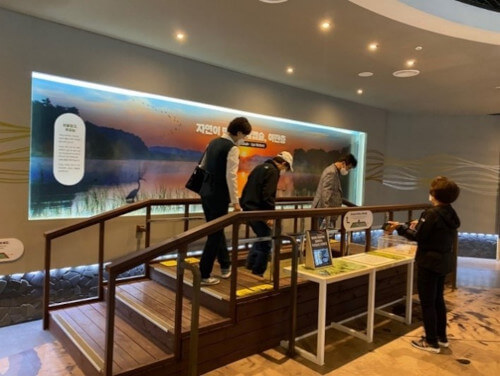
Stepping on the peat layer at the Changnyeong Upo Wetland Eco Center © EAAFP Secretariat
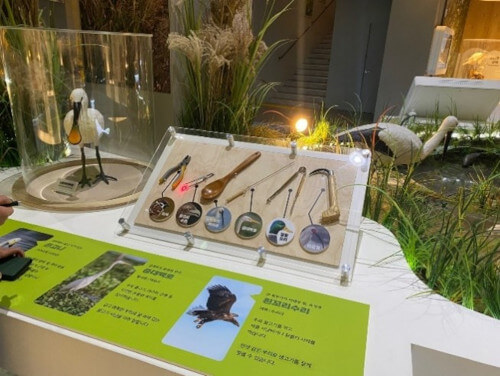
Beak description comparing to the tools for humans at the Upo Wetland Eco Center © EAAFP Secretariat
Restored Sanbakbeol Wetland
Sanbakbeol Wetland used to be agricultural land and now is restored as a marsh of an area of 192,250 m2 in November 2017. There is an artificial island that was designed as a birds’ roosting site. To maintain the environment of the island, . Reed control on the island enhance birds’ usage of the habitat and it proved that more birds visited the roosting site, according to the monitoring cameras that GREF had set on the island.
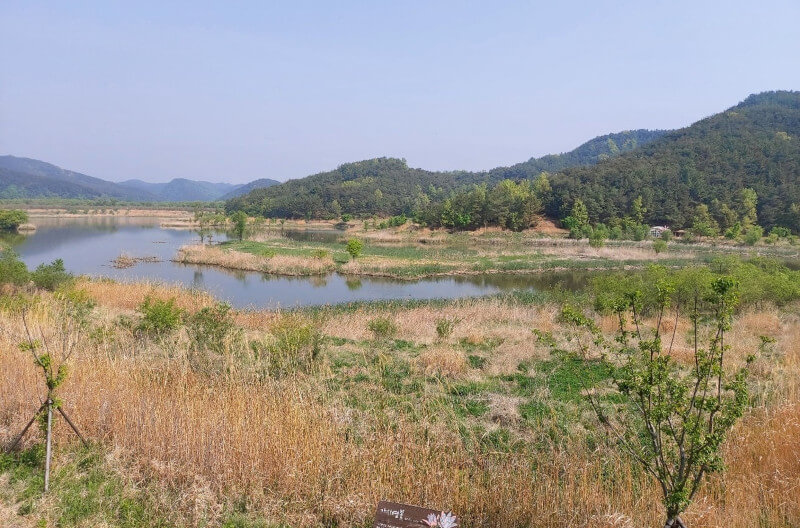
Sanbakbeol Wetland © EAAFP Secretariat
Upo, where artists belong
Wetlands and wildlife have always been inspiring to artists. Mr. Bongchae Jung, a nature photographer, is one of the artists who has been in love with Upo. He introduces himself as “a photographer ”, meaning that he is now acting as a part of nature, not just as an observer of nature, after decades working for the Upo Wetland. He is a well-known nature photographer, and a lot of his artworks focus on the Upo Wetland, where he lived for more than 20 years. Mr. Jung aims to raise public awareness to conserve wetlands via his artworks. Together with Mr. Jung, there are a number of artists working with ‘Changnyeong Upo Wetland Ecotourism Association’, and they held art events such as Upo Ecological Art Village Project. We can say, nature inspires artists, and their art inspire people to take conservation actions to nature.
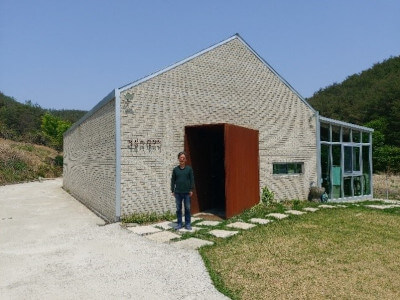 Mr. Bongchae Jung at the Gallery of Jeong Bongchae © EAAFP Secretariat |
 The photographs of its inside © EAAFP Secretariat |
Watch the playback:




